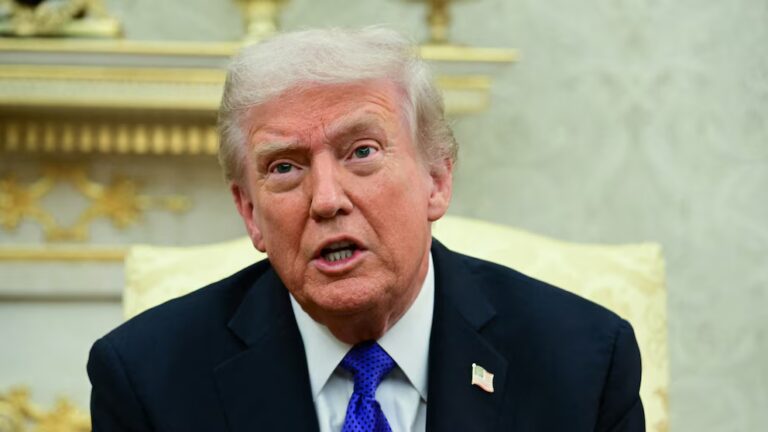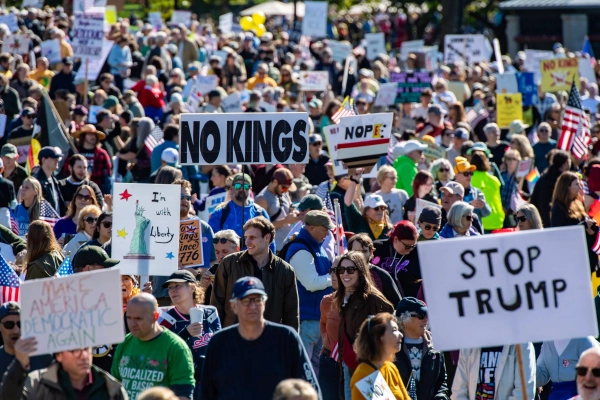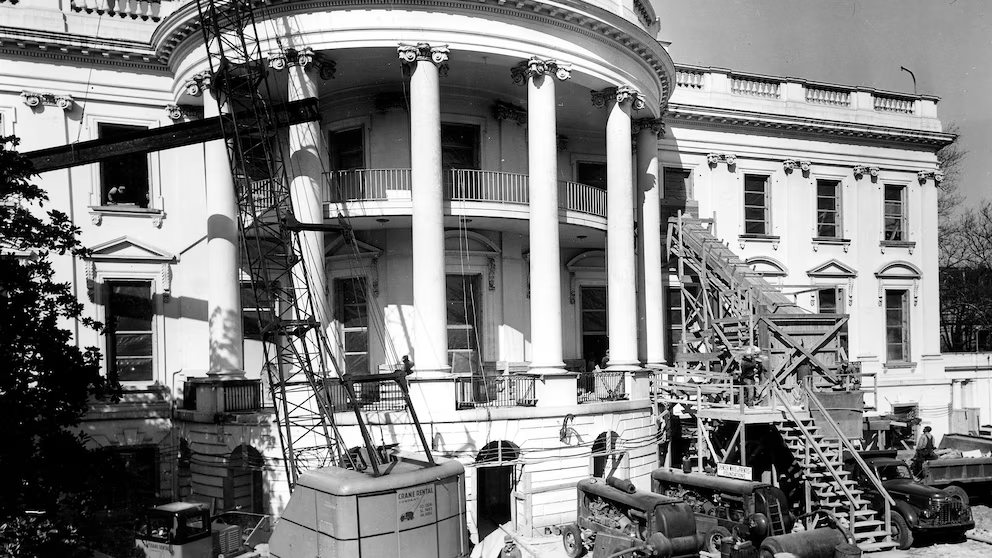
2:09In this archived photograph from Feb. 27, 1950, refurbishments are underway at the White House, as a truck crane hoists a 40-foot girder via the southwest window of Room 20 on the second level. On the right, rubble from the receptacle is being placed onto a truck.National Archives
The White House is countering disapproval of the dismantling of the building’s East Wing by alluding to substantial overhauls executed during past presidencies.
The destruction, planned to pave the way for President Donald Trump’s intended expansive ballroom, signifies the initial considerable construction undertaking on the White House premises in almost 80 years.
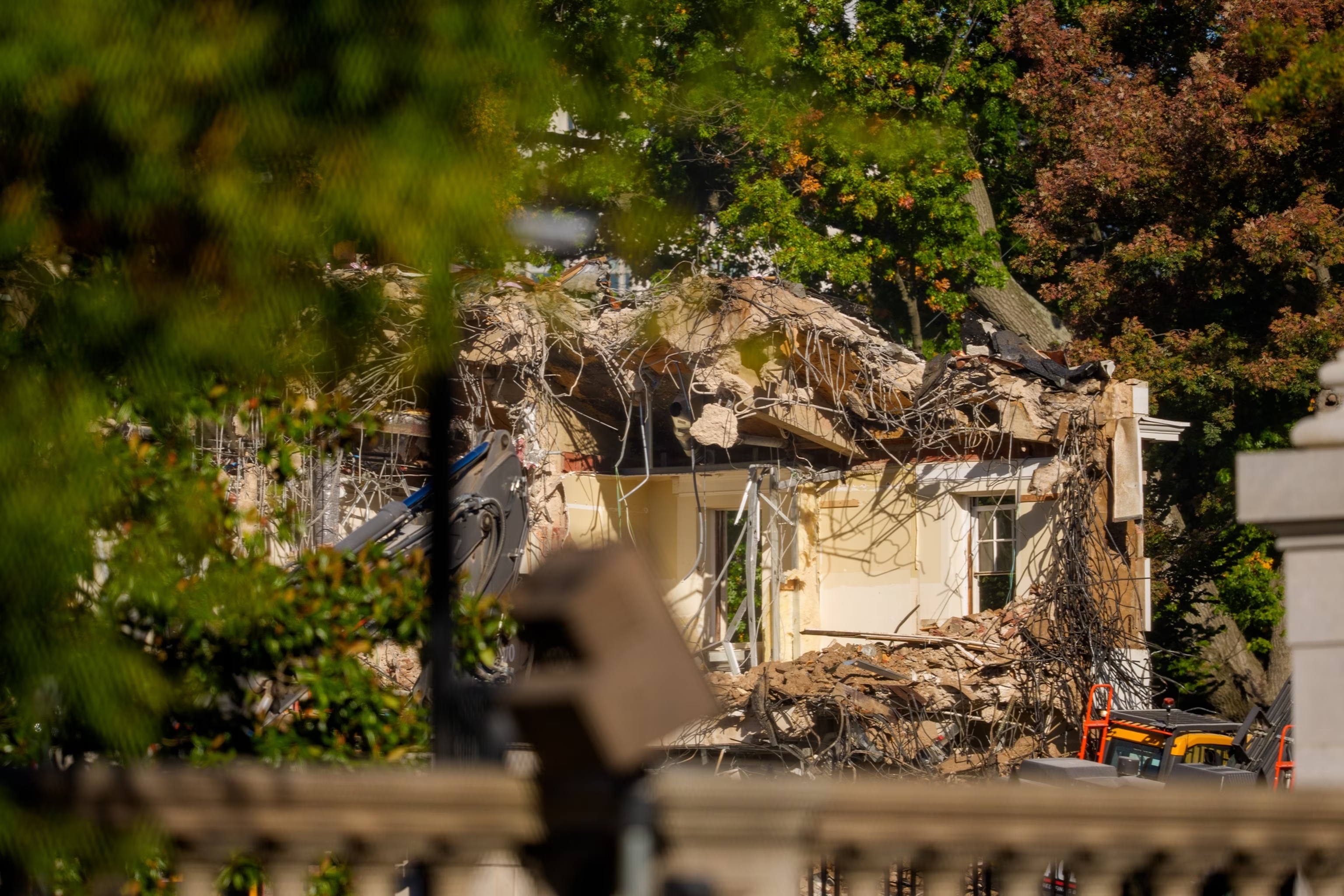
The frontage of the East Wing of the White House is torn down by construction teams, October 22, 2025 in Washington.Andrew Harnik/Getty Images
Detractors have challenged the necessity, considering the available White House area for large gatherings and its consequence on the East Wing, customarily utilized by the first lady and her team.
Even though the White House has offered scant specifics, incorporating data concerning private benefactors backing the $300 million venture, it asserts Trump is prolonging a “distinguished presidential tradition” of revamping — delineating decades of alterations to the complex.
East and West Colonnades, 1801
Upon President Thomas Jefferson’s inauguration in 1801, he employed his architectural expertise to aid in shaping the East and West Colonnades on each side of the estate, as indicated by the White House Historical Society.
These routes link the key residence to the adjacent service structures. Jefferson, as well, encountered backlash from his critics.
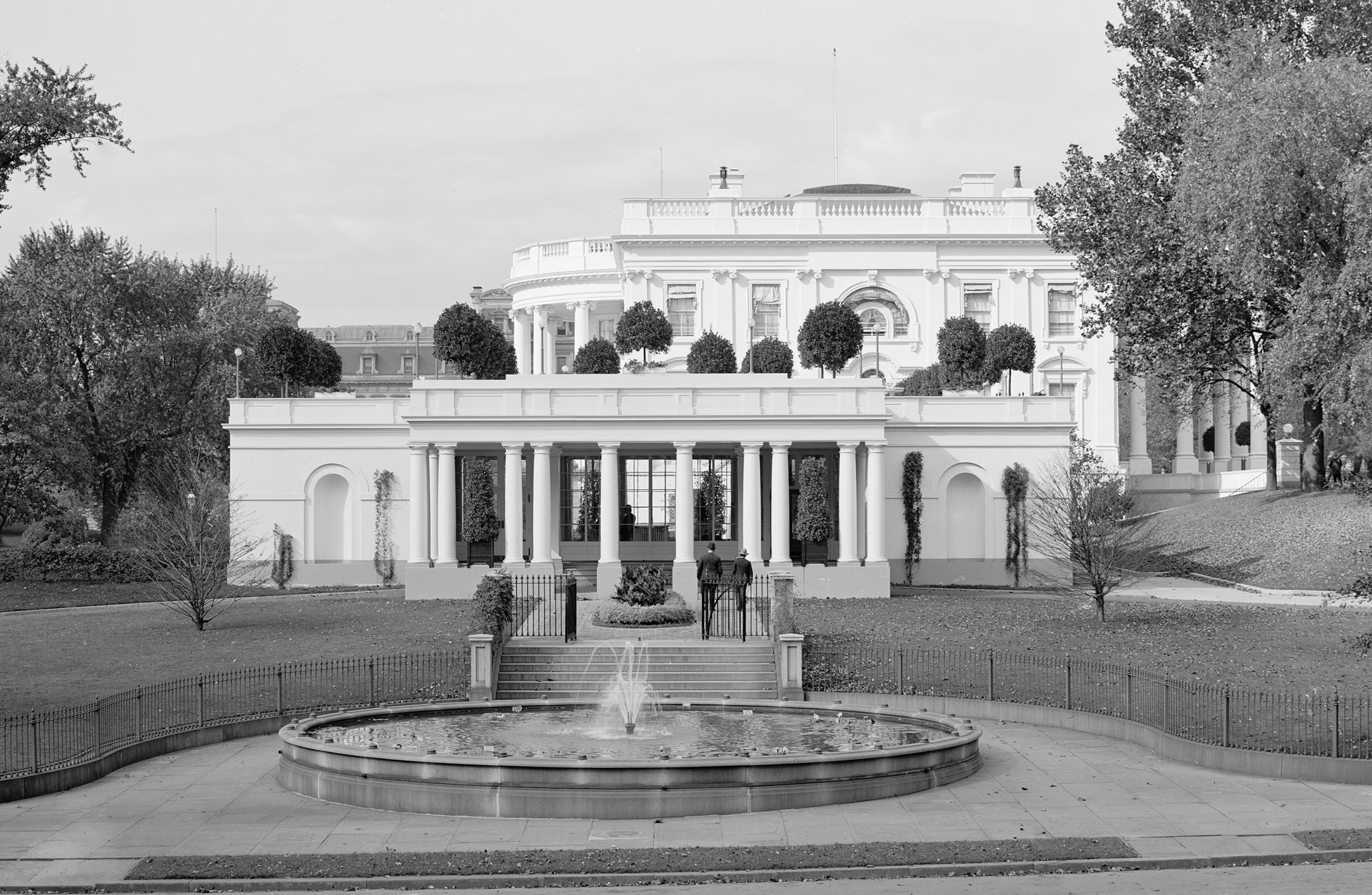
This photograph, provided by the U.S. Library of Congress, displays the eastern gateway of the White House, Washington, in 1906.U.S. Library of Congress via AP
“Within Congress, Federalist adversaries contended that Jefferson’s adjustments reflected refined predilections, contrasting with the democratic straightforwardness the White House was intended to represent,” the historical society noted.
North and South Porticos, 1824-1829
Following the severe destruction of the White House in the War of 1812, President James Monroe sanctioned the establishment of the South Portico, a semi-circular veranda featuring sizable columns that overlooked the South Lawn. Finalized in 1824, it did not face any considerable opposition, according to the historical society.
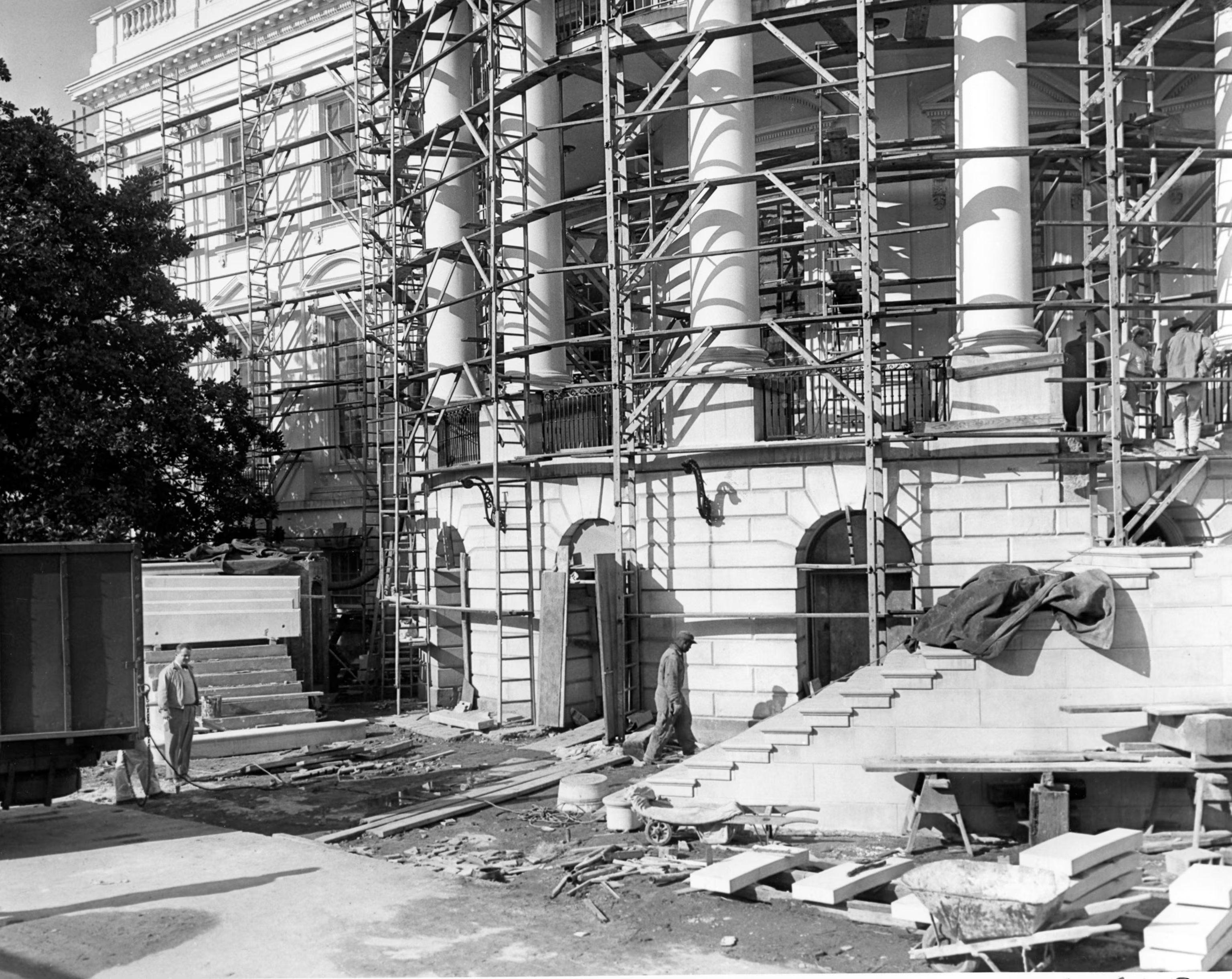
In this file photograph dated January 4, 1952, new steps for the South Portico are being constructed amid the White House restoration. The steps and facade are composed of Missouri limestone atop a concrete base.National Archives
Five years afterward, President Andrew Jackson directed the erection of a parallel portico on the north entrance, complete with towering columns. That modification provoked skepticism, the historical society conveyed.
“The North Portico’s building, for which Congress designated $24,729 (approximately $850,000 presently), was contentious due to its proposition during a phase of economic decline,” the historical society communicated.
Jackson’s rivals in the Whig Party questioned why the finances weren’t allocated for debt alleviation. Other censors discovered the layout to be incongruous with the remainder of the White House, according to the historical society.
The West Wing, 1902
Upon President Theodore Roosevelt’s inauguration, the western flank of the White House accommodated a greenhouse.
Roosevelt harbored alternate visions and tasked for a fresh segment of the grounds to incorporate room for the president and his functionaries.
“Critics asserted that Roosevelt’s advancement prioritized function over historic allure,” the historical society remarked.
The West Wing, which totalled $65,000, approximately $2 million in today’s currency, as per the historical society, inaugurated in 1902 and was broadened under William Howard Taft seven years thereafter.
The East Wing, 1942
President Franklin D. Roosevelt unlocked another administrative edifice on the east aspect of the estate in 1942 amidst World War II.
It eventually provided space for the first lady and her personnel.
Roosevelt’s augmentation was similarly disputed, specifically amidst Republican critics, according to the historical society.
“Congressional Republicans designated the disbursement as improvident, with some accusing Roosevelt of exploiting the project to reinforce his presidency’s depiction,” it conveyed.
The Truman renovation, Truman Balcony 1948-1952
Upon President Harry Truman’s assumption of office in 1945, the White House was in deteriorated condition from decades of attrition.
“Engineers ascertained that the White House was at risk of collapse owing to debilitated wooden supports, archaic plumbing, and electrical configurations,” the historical society related.
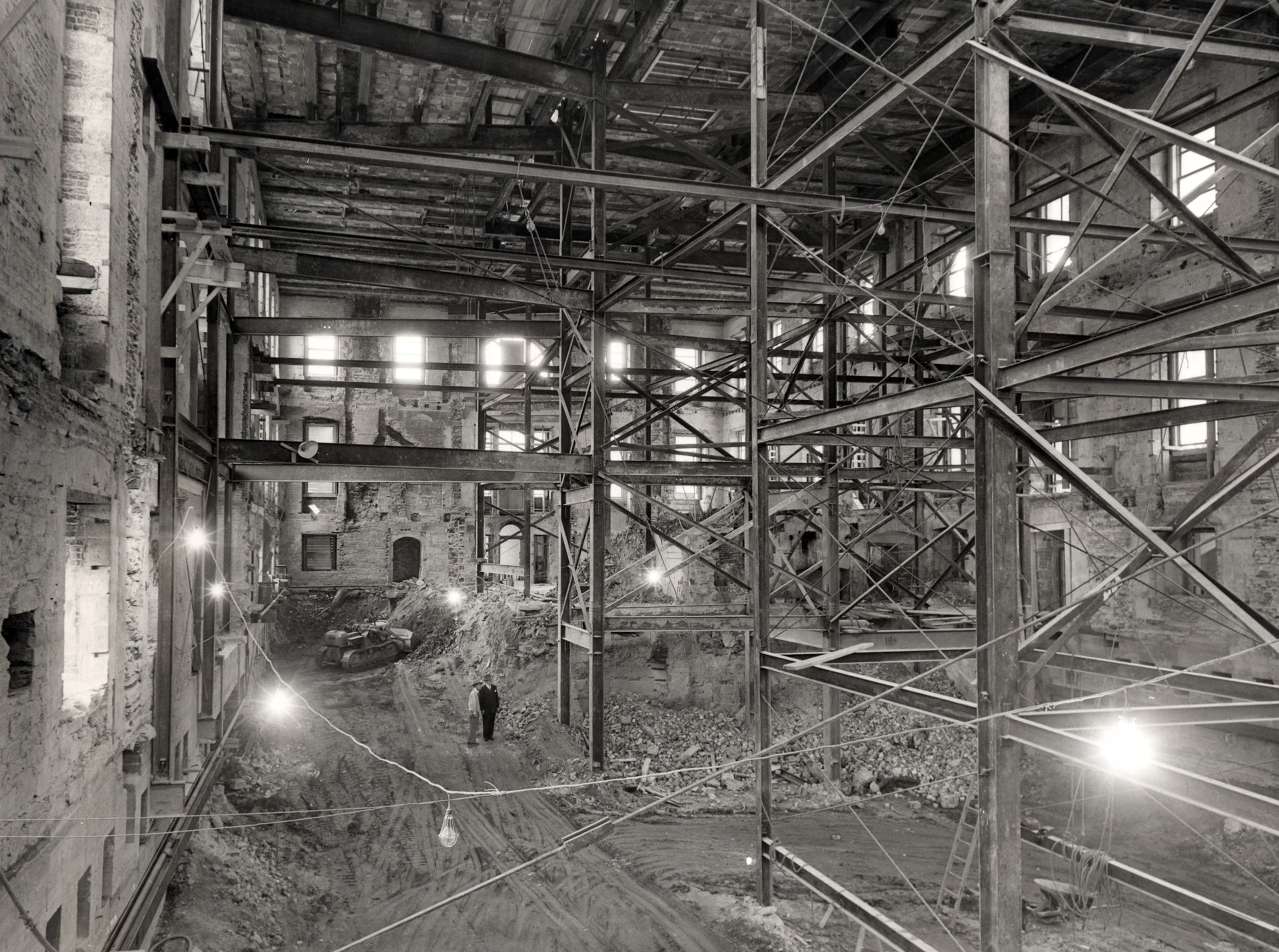
In this 1950s file photo, the inside of the White House is shown after being gutted to accomplish a renovation. Iron beams hold up the original walls of the White House, which were not replaced.National Archives
Truman mandated a comprehensive renovation and vacated the White House in 1948 for a span of four years while the undertaking was finalized.
The $5.7 million renovation, which would sum to approximately $60 million presently, according to the historical society, encompassed dismantling the interior, preserving merely the peripheral walls.
Novel steel, concrete, wiring, flooring and interior partitions were erected inside. Two additional basements were incorporated, and the third level was enlarged.
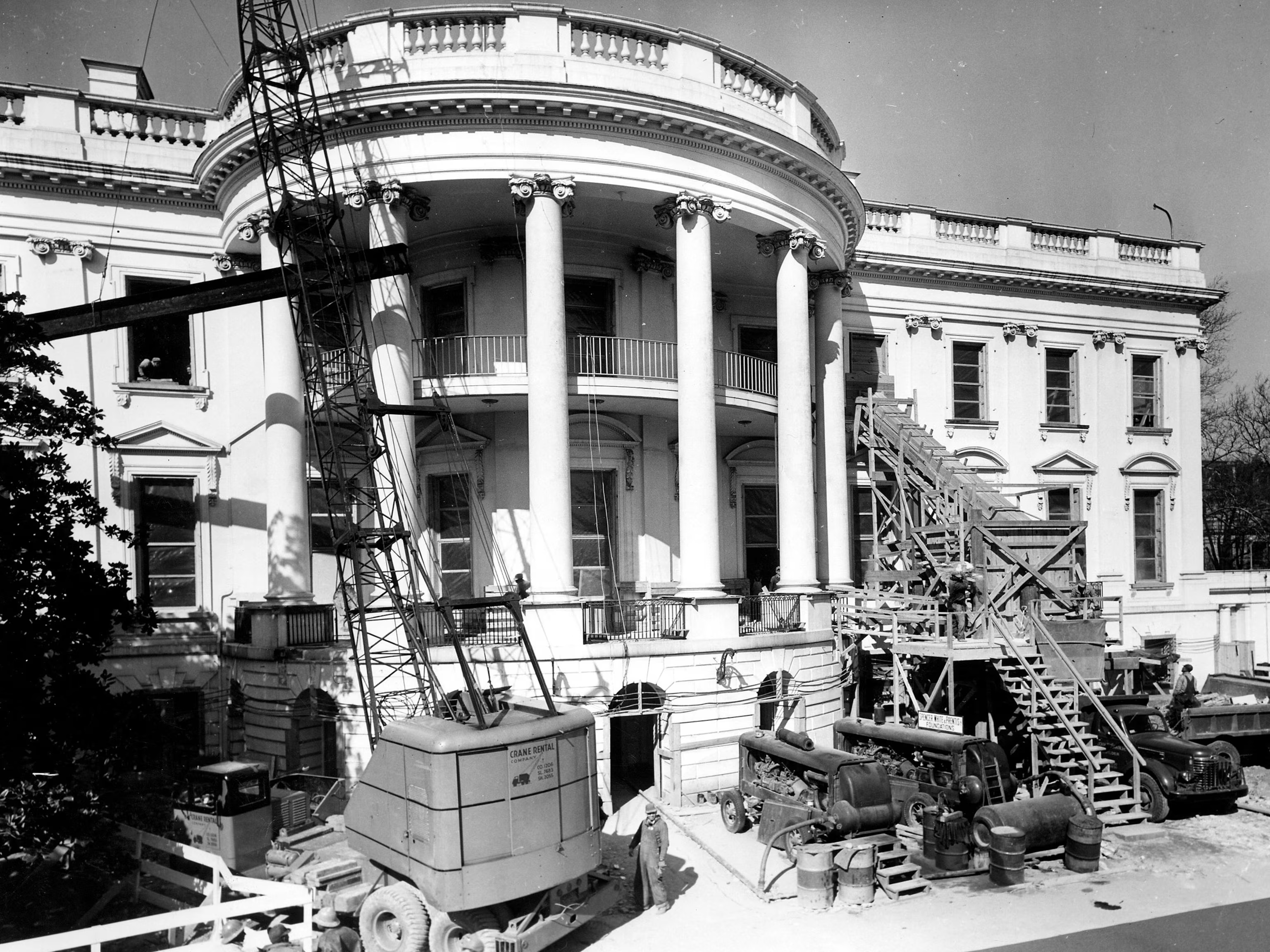
In this archived image from Feb. 27, 1950, renovations are in progress at the White House, where a truck crane elevates a 40-foot beam through the southwest window of Room 20 on the second floor. On the right side, debris is being loaded onto a truck from the hopper.National Archives
Republicans sustained scrutiny of the venture, contending that Truman’s expenditure should have been more restrained, in light of the post-World War II economic resurgence.
“The Commission on the Renovation of the Executive Mansion encountered strain to reconcile modernization with conservation, triggering debates over particulars such as the reuse of historical woodwork,” the historical society voiced.
Republicans and Truman’s detractors were similarly deprecating of the 1948 annexation of a balcony to the second story of the South Portico.
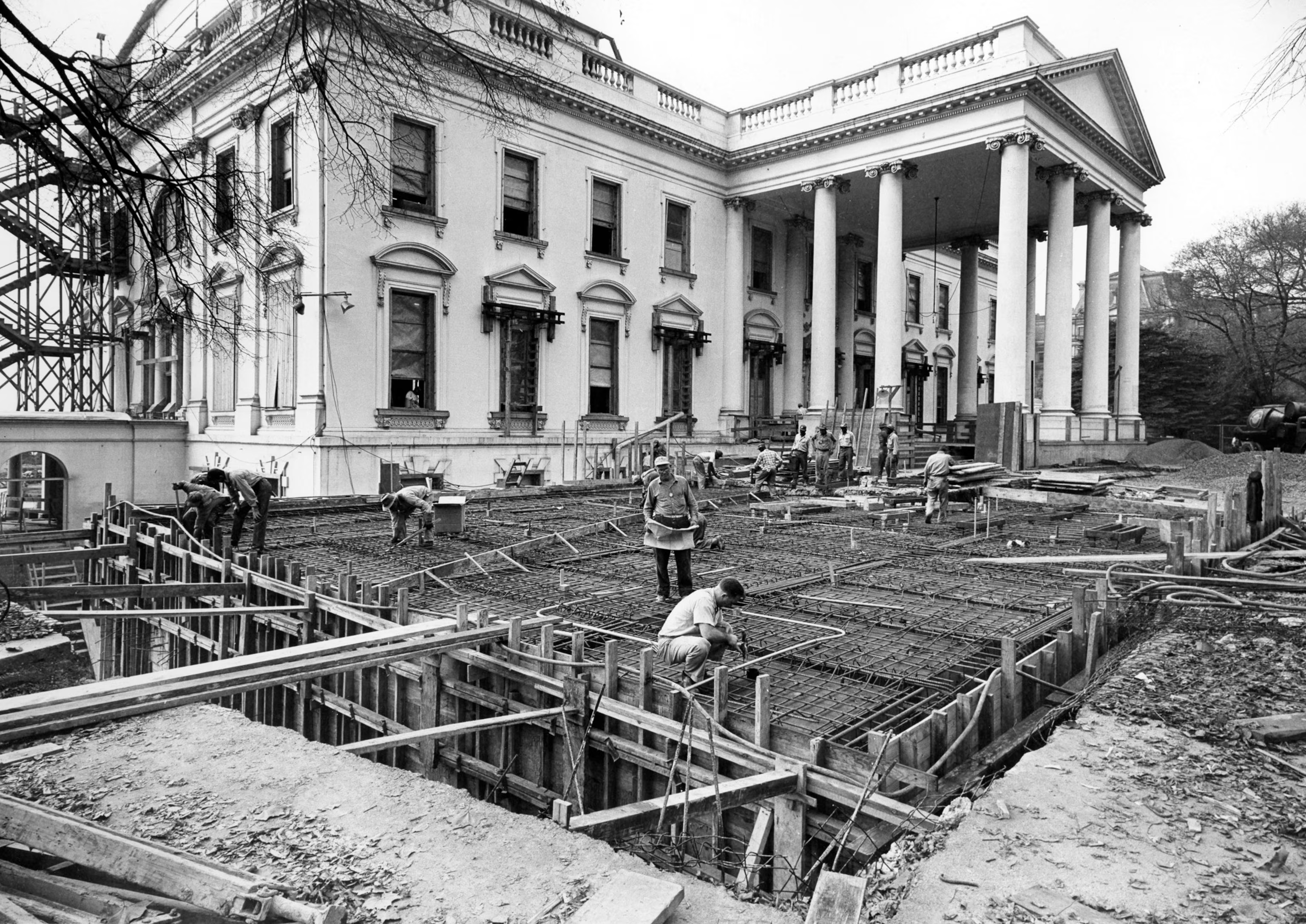
In this archived image from Nov. 6, 1950, the northeast corner of the White House is displayed during rehabilitation. Workers are installing reinforced steel for the laying of concrete ceilings in the Fan Room and surrounding spaces in this area.National Archives
“Public sentiment was split, with certain individuals valuing the balcony’s practicality and others perceiving its $16,000 expense as a triviality amid economic revitalization,” the historical society communicated. “Over time, the balcony evolved into a renowned element, employed by first families for leisure and community appearances.”
Rose Garden, 1962
In 1962, first lady Jaqueline Kennedy sought to re-envision the garden locale situated in front of the West Colonnade.
Kennedy fashioned the Rose Garden “to broaden and transform the zone into a sophisticated garden appropriate for formal affairs, drawing inspiration from French and English designs,” according to the historical society.
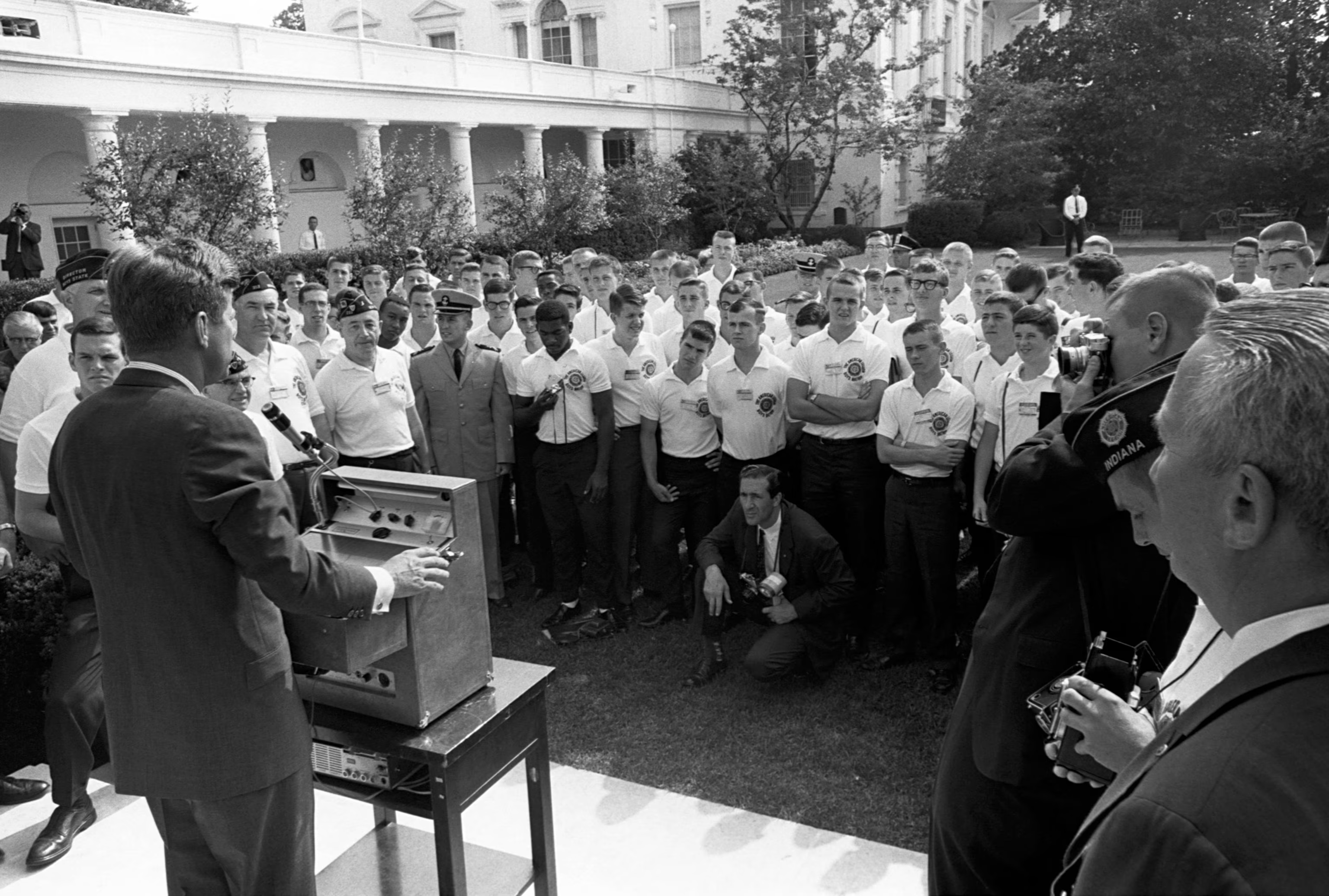
In this file photo taken on July 24, 1963, President John F. Kennedy addresses a gathering of young men at a Rose Garden Ceremony for Boys Nation. Future president Bill Clinton is among the attendees.Corbis via Getty Images
The first lady garnered criticism from Republicans in Congress, the historical society mentioned.
“Within Congress, certain conservative legislators regarded Kennedy’s emphasis on esthetics as elitist, indicting her of prioritizing style amidst a period of civil rights agitation and Cold War anxieties,” the society mentioned.
This past summer, Trump enacted a substantial modification to the Rose Garden, resurfacing it in the style of his Florida Mar-a-Lago residence and renaming it the Rose Garden Club.
He contended the space was not agreeable for visitors because of their footwear becoming lodged in the damp turf.
The pool
Roosevelt arranged for an indoor pool to be set up in 1933 for physical treatment affiliated with his polio.
The pool remained within the White House until 1970, when President Richard Nixon repurposed the space into the White House Press briefing room.
Nonetheless, it would not be extended before the commander-in-chief would possess an area to drill his swimming techniques.
President Gerald Ford, a keen swimmer, sanctioned an outdoor pool in 1975. The pool totaled roughly $66,000, or $410,000 in present-day figures, and was sponsored by private endowments, the historical society shared.
An exterior cabana proximate to the pool was subsequently constructed.
Sourse: abcnews.go.com

